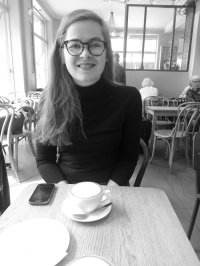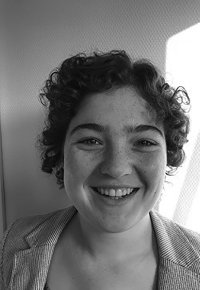Text: Tessa Louwerens en Luuk Zegers
Six teams present their solutions here: Glass tree huts, heat sensors under your desk, outdoor workstations and a flexible meditation and slumber corner.

Rio Alfajri (24)
Master’s student of International Development, team Brainsharing Corner
Our idea is to bring students together by allowing them to share their knowledge. They can do this through a social media app that we call Brainsharing. Students can use the app to ask for help on certain topics, like statistics. The app matches them with other students who have filled in ‘statistics’ as an expertise. If an expert agrees to help the student who made the request, they can meet in the Brainsharing Corner in the Forum. We want to encourage participants by awarding points for helping fellow students. These points can be exchanged for rewards such as extra ECTS credits or gifts.’

Sarah van Kooten (20)
Bachelor’s student of Landscape Architecture & Spatial Planning, team The Trees are the Limit
Students often suffer from stress, which leads to physical and mental problems. We know that nature reduces stress. WUR is already working on this, but it is mainly bringing nature to the people, for example by placing indoor plants. We have come up with a concept that brings people to nature. Our idea is to have a self-sufficient glass tree hut centred on a cluster of trees. High in the tree hut are places where you can study quietly. Lower down is more room for meeting up, and there is a community garden on the ground floor. At present, trees often have to make way for buildings but you can also embrace the trees.’
High in the tree hut are places where you can study quietly

Meyke Kamstra (21)
Bachelor’s student of Management, Economics & Consumer Studies, team WUR to Go
‘We focused on two problems: the lack of study areas and the inefficient use of classrooms. We propose that new educational buildings should be designed as multifunctional spaces. For example, lecture rooms where you can move the chairs and tables and put up walls, converting them into quiet areas or rooms for group work. We reckon you could use artificial intelligence and big data to work out what kinds of space are needed at what times. Big data would even let you give personal tips. For example, an app on your phone could register when you are cycling over the Forum bridge and show you where you can find a free workstation.’

Floor Boonstra (22)
Bachelor’s student of Health & Society, team Seat Yourself
‘Our team came up with an idea for reducing the crush in the Forum library during revision and exam weeks by making more effective use of the library. The problem is that students often leave a jacket on a chair to reserve the seat while they go off to play sports or eat. We propose putting heat sensors under the tables to measure body heat. If someone has been away from their desk for more than half an hour, a green light will come on and someone else can sit there. If the original occupant’s things are still there, you put them in a special cupboard. The idea is that students will then make more effective use of their breaks. The workstations will get a QR code that you can scan, so that you get an alert via an app when your half hour is nearly up. The same app will also show you how many workstations are still available.’

Sergi Domenech-Carbo (24)
Masterstudent Organic Agriculture, team Flexi-Space
Master’s student of Organic Agriculture, team Flexi-Space
‘There is no place on campus to rest or relax, whereas we really need this. We want to create a space with attention for mind, body and heart — three parts of ourselves that need attention. We envision a big, flexible space with movable walls that can be transformed for different purposes. For the mind, we want a place to relax, meditate, sleep and rest. For the body we want an active place, for yoga or dance lessons for instance. And for the heart, we want a place where you can connect with each other and share your feelings. Our Flexi-Space could for example be incorporated in the new educational building.’

Bernice Wesselink (22)
Master’s student of Communication, Health & Life Sciences, team Inside Out
‘If the weather is nice, a lot of people go outside and sit on the grass. Great for chillaxing but you can’t work there. At the same time, we have a shortage of workstations. Our idea is to create outdoor workstations. Honeycomb-shaped hedges will separate the areas off and provide shade. There will be all-weather tables and chairs while a roof covered in solar panels will provide electricity for the laptops and keep off the rain. The beauty of our idea is that we make smart use of the limited space on campus. The downside is that these spots can only be used in summer.’
We want outdoor workstations, shielded by hedges

